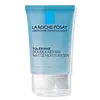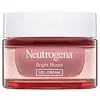What's inside
What's inside
 Key Ingredients
Key Ingredients

 Benefits
Benefits

 Concerns
Concerns

 Ingredients Side-by-side
Ingredients Side-by-side

Water
Skin ConditioningGlycerin
HumectantSilica
AbrasiveBetaine
HumectantNiacinamide
SmoothingCetearyl Isononanoate
EmollientZea Mays Starch
AbsorbentCeramide NP
Skin ConditioningCarbomer
Emulsion StabilisingGlyceryl Stearate Citrate
EmollientSodium Hyaluronate
HumectantSodium Hydroxide
BufferingPerlite
AbsorbentHydroxyacetophenone
AntioxidantCaprylyl Glycol
EmollientXanthan Gum
EmulsifyingWater
Skin ConditioningDimethicone
EmollientGlycerin
HumectantMandelic Acid
AntimicrobialTriethyl Citrate
MaskingGluconolactone
Skin ConditioningAcetyl Glucosamine
Skin ConditioningHydroxyethyl Acrylate/Sodium Acryloyldimethyl Taurate Copolymer
Emulsion StabilisingPolyacrylate Crosspolymer-6
Emulsion StabilisingButylene Glycol
HumectantSqualane
EmollientAluminum Starch Octenylsuccinate
AbsorbentSodium Hydroxide
BufferingPhenoxyethanol
PreservativeDimethicone Crosspolymer
Emulsion StabilisingCetearyl Olivate
Dimethiconol
EmollientSorbitan Olivate
EmulsifyingChlorphenesin
AntimicrobialCetearyl Alcohol
EmollientPolysorbate 60
EmulsifyingSuccinoglycan
Skin ConditioningCoco-Glucoside
CleansingDisodium EDTA
Parfum
MaskingEthylhexylglycerin
Skin ConditioningSilica
AbrasiveTin Oxide
AbrasiveTitanium Dioxide
Cosmetic ColorantMica
Cosmetic ColorantCI 16035
Cosmetic ColorantWater, Dimethicone, Glycerin, Mandelic Acid, Triethyl Citrate, Gluconolactone, Acetyl Glucosamine, Hydroxyethyl Acrylate/Sodium Acryloyldimethyl Taurate Copolymer, Polyacrylate Crosspolymer-6, Butylene Glycol, Squalane, Aluminum Starch Octenylsuccinate, Sodium Hydroxide, Phenoxyethanol, Dimethicone Crosspolymer, Cetearyl Olivate, Dimethiconol, Sorbitan Olivate, Chlorphenesin, Cetearyl Alcohol, Polysorbate 60, Succinoglycan, Coco-Glucoside, Disodium EDTA, Parfum, Ethylhexylglycerin, Silica, Tin Oxide, Titanium Dioxide, Mica, CI 16035
 Reviews
Reviews

Ingredients Explained
These ingredients are found in both products.
Ingredients higher up in an ingredient list are typically present in a larger amount.
Glycerin is already naturally found in your skin. It helps moisturize and protect your skin.
A study from 2016 found glycerin to be more effective as a humectant than AHAs and hyaluronic acid.
As a humectant, it helps the skin stay hydrated by pulling moisture to your skin. The low molecular weight of glycerin allows it to pull moisture into the deeper layers of your skin.
Hydrated skin improves your skin barrier; Your skin barrier helps protect against irritants and bacteria.
Glycerin has also been found to have antimicrobial and antiviral properties. Due to these properties, glycerin is often used in wound and burn treatments.
In cosmetics, glycerin is usually derived from plants such as soybean or palm. However, it can also be sourced from animals, such as tallow or animal fat.
This ingredient is organic, colorless, odorless, and non-toxic.
Glycerin is the name for this ingredient in American English. British English uses Glycerol/Glycerine.
Learn more about GlycerinSilica, also known as silicon dioxide, is a naturally occurring mineral. It is used as a fine, spherical, and porous powder in cosmetics.
Though it has exfoliant properties, the function of silica varies depending on the product.
The unique structure of silica enhances the spreadability and adds smoothness, making it a great texture enhancer.
It is also used as an active carrier, emulsifier, and mattifier due to its ability to absorb excess oil.
In some products, tiny microneedles called spicules are made from silica or hydrolyzed sponge. When you rub them in, they lightly polish away dead skin layers and enhance the penetration of active ingredients.
Learn more about SilicaSodium Hydroxide is also known as lye or caustic soda. It is used to adjust the pH of products; many ingredients require a specific pH to be effective.
In small amounts, sodium hydroxide is considered safe to use. However, large amounts may cause chemical burns due to its high alkaline.
Your skin has a natural pH and acid mantle. This acid mantle helps prevent harmful bacteria from breaking through. The acid mantle also helps keep your skin hydrated.
"Alkaline" refers to a high pH level. A low pH level would be considered acidic.
Learn more about Sodium HydroxideWater. It's the most common cosmetic ingredient of all. You'll usually see it at the top of ingredient lists, meaning that it makes up the largest part of the product.
So why is it so popular? Water most often acts as a solvent - this means that it helps dissolve other ingredients into the formulation.
You'll also recognize water as that liquid we all need to stay alive. If you see this, drink a glass of water. Stay hydrated!
Learn more about Water